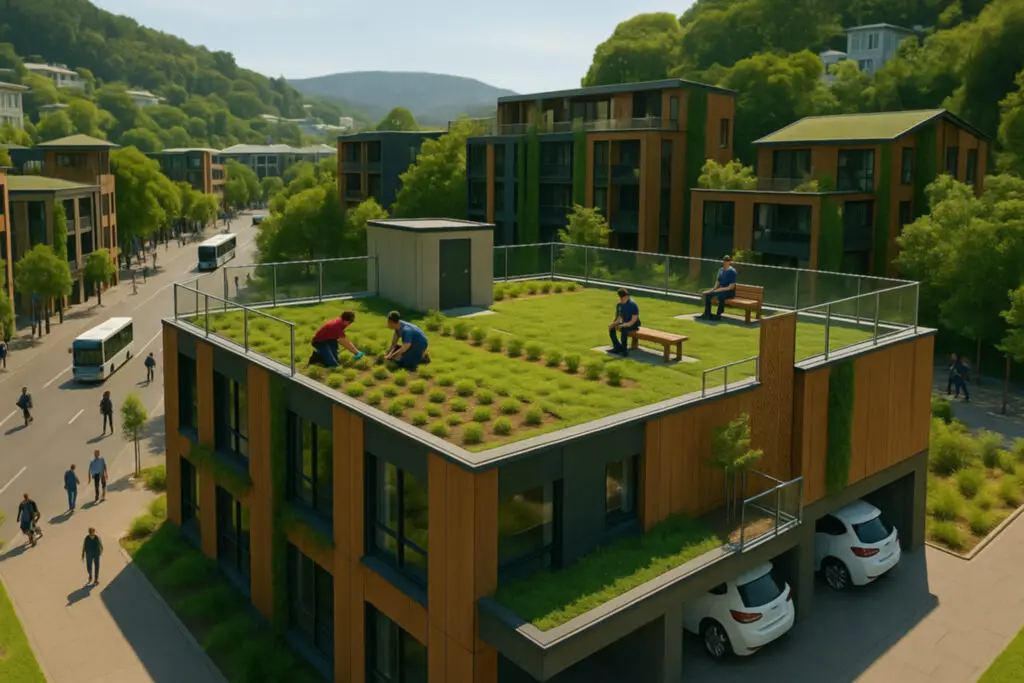Sustainable Social Economic QandA

Sustainable Social Economic QandA Development raises many practical questions. This FAQ summarizes core concepts like localized economies, cooperatives and circular design, then offers clear guidance you can apply today. Use it to clarify definitions, compare case studies and find the right reference for your city, campus or neighborhood. It draws on peer-reviewed research and real-world successes to keep every answer accurate and actionable. Ready for deeper detail?
How does community wealth building advance Sustainable Social and Economic Models?
Community wealth building (CWB) keeps procurement and investment close to home, so money circulates locally and multiplies opportunity. Anchor institutions—councils, hospitals and universities—shift contracts to cooperatives, social enterprises and small firms. The tactic diversifies ownership, raises wages and funds green amenities. Preston, England, adopted CWB in 2013; within five years unemployment fell and local spending tripled. Similar programs now appear in Scotland, New Zealand and Australia. Because CWB roots capital where people live, it fortifies Sustainable Social and Economic Models and cuts leakage to distant shareholders. Residents gain reliable incomes, while cities gain revenue for parks, transit and renewable energy. Research from the Center for Local Economic Strategies confirms CWB reduces inequality and boosts resilience (CLES).
Why do localized economies strengthen urban sustainability?
Localized economies keep production, retail and services near residents, so money fuels neighborhood prosperity instead of distant corporations. Studies show every $100 spent locally can generate seventy percent more regional activity than a chain purchase. Short supply chains trim transport emissions, supporting climate goals. During COVID-19 disruptions, communities with strong local networks maintained food and medicine access more reliably. Farmers’ markets, community-supported agriculture and local procurement policies all reinforce this loop. These actions diversify employment, lift household incomes and create demand for green services like bike delivery. Because value circulates repeatedly, local tax revenue grows, funding parks, libraries and clean transit. Population Matters reports robust local economies form a critical pillar of sustainable urban development (Population Matters).
How do cooperatives power Sustainable Social and Economic Models in cities?
Cooperatives give residents direct stakes in businesses, aligning profit with local well being. Members vote on key decisions and share dividends, so incentives favor community benefit. Housing co-ops deliver stable, energy-efficient homes. Energy co-ops install solar arrays and own wind turbines. Food co-ops stock regional organic produce. In Germany, citizen energy cooperatives control over 1,000 renewable projects and keep returns local (German Government). Because co-ops reinvest earnings nearby, they fit naturally into Sustainable Social and Economic Models. They create green jobs and fund social services. Cooperative banks also weather crises better, providing steady credit to small firms. When residents see tangible benefits, social cohesion strengthens and cities gain reliable partners for green infrastructure.
Can decentralized finance help fund community green projects?
Decentralized finance (DeFi) uses blockchain to raise capital without banks. Communities can tokenize solar farms, urban forests or retrofit programs and sell digital tokens worldwide. Smart contracts automate payouts and audit performance, increasing transparency and lowering costs. Regenerative Finance links each token to measurable ecological benefits, such as tonnes of carbon captured (Cognizant). Investors gain impact plus return, while neighborhoods secure needed infrastructure quickly. Because funding flows peer-to-peer, small projects bypass traditional gatekeepers. Cities experimenting with DeFi must still ensure verification, consumer protection and data security. With proper safeguards, DeFi can complement municipal green bonds and widen the toolbox for Sustainable Social and Economic Models seeking inclusive funding.
What role does the circular economy play in Sustainable Social Economic QandA?
A circular economy keeps materials cycling instead of becoming waste. Cities design buildings for easy disassembly, promote repair cafes and run compost programs. These practices cut landfill use, save resources and lower emissions tied to extraction and transport. Job creation follows: refurbishing furniture, re manufacturing electronics and running sharing libraries all need skilled labor. New Zealand adopted a national recycling strategy in 2023, aiming for a low-waste circular economy by 2050 (SGI Network). Scandinavian cities power district heating with waste-to-energy plants and reuse building materials in new construction. Because circular initiatives localize value and reduce environmental impact, they underpin Sustainable Social and Economic Models. Residents enjoy cleaner streets and affordable access to goods through rental or repair services.
How can AI accelerate Sustainable Social Economic QandA Models in cities?
Artificial intelligence acts as a digital assistant for Sustainable Social and Economic Models. It analyses sensor data to optimize traffic lights. A Seattle pilot cut stops thirty percent and emissions ten percent (National League of Cities). AI monitors water networks and grids, predicting leaks before costly damage occurs. Building-management systems learn occupancy patterns and adjust HVAC, saving energy. Planners create digital twins—virtual city replicas—to test zoning or climate scenarios safely. These tools reveal payback clearly and engage residents via dashboards. AI also improves recycling by recognizing materials on conveyor belts. Algorithms need oversight to protect privacy and avoid bias. Careful governance ensures benefits reach everyone, enhancing trust and resilience.